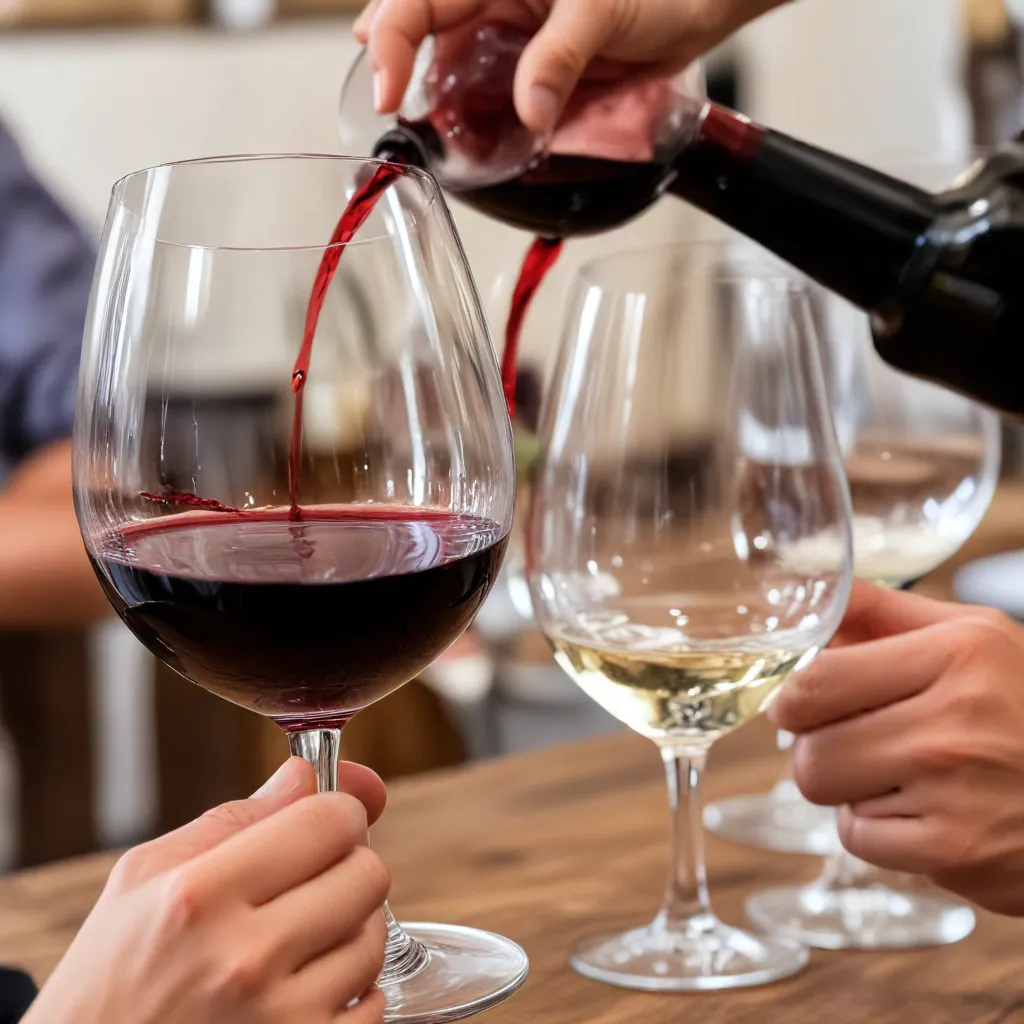
Wine tasting is an art form that transcends mere consumption. It is a sensory journey that unlocks the nuanced expressions of the grape, the winemaker’s craft, and the unique terroir. However, beneath the allure of a well-crafted vintage lies the risk of flaws that can diminish the overall tasting experience. As a hospitality and wine expert writing for the Wine Garden Inn, I am honored to share insights on mastering the art of wine tasting, with a particular focus on techniques for identifying and understanding common wine flaws.
Understanding the Wine Tasting Process
The process of wine tasting is a multifaceted endeavor that engages all the senses. It begins with a visual examination of the wine’s clarity, color, and viscosity, which can provide valuable clues about the grape variety, the winemaking techniques, and the wine’s age. The swirling motion helps to “open up” the wine, releasing its aromatic compounds and allowing the taster to fully appreciate the bouquet.
The olfactory analysis is arguably the most crucial step, as our sense of smell is deeply connected to our perception of flavor. By identifying the primary, secondary, and tertiary aromas, we can begin to decipher the wine’s varietal characteristics, the influence of oak aging, and the effects of bottle maturation.
Finally, the tasting itself allows us to experience the wine’s texture, acidity, tannins, and overall balance. The finish, or the lingering impression left on the palate, offers further insights into the wine’s quality and potential for aging.
Common Wine Flaws and Defects
While the world of wine is rife with delightful complexities, it is also vulnerable to a range of flaws and defects that can diminish the tasting experience. Understanding these common issues is essential for wine enthusiasts and professionals alike.
Off-Flavors in Wine
One of the most prevalent wine flaws is the presence of off-flavors, which can manifest in various forms. Cork taint, caused by the presence of 2,4,6-trichloroanisole (TCA), imparts a musty, damp cardboard-like aroma that often masks the wine’s true characteristics. Oxidation, on the other hand, can lead to a flat, sherry-like character, with the wine’s fruit aromas and freshness replaced by a stale, nutty profile.
Oxidation and Reduction in Wine
Closely related to off-flavors, oxidation and reduction can also significantly impact a wine’s quality. Excessive exposure to oxygen can cause a wine to become flat and prematurely aged, while a lack of oxygen, or reduction, can result in unpleasant sulfur-like aromas, often described as rotten eggs or cooked cabbage.
Cork-Related Defects
In addition to cork taint, cork-related issues can also manifest in other ways. Cork creep, where the cork protrudes from the bottle, can lead to premature aging and oxidation, while cork pop, where the cork is pushed out of the bottle, can indicate improper storage or a faulty seal.
Techniques for Identifying Wine Flaws
Recognizing and accurately identifying wine flaws requires a combination of sensory acuity, technical knowledge, and practical experience. By mastering the following techniques, wine enthusiasts can elevate their tasting skills and ensure a more enjoyable drinking experience.
Visual Inspection of Wine
The first step in identifying potential flaws is a thorough visual inspection of the wine. Holding the glass at a 45-degree angle against a white background, carefully observe the wine’s clarity, color, and viscosity. A hazy, cloudy appearance may indicate the presence of suspended particles or microbial activity, while an abnormal color can signal oxidation or other issues.
Olfactory Analysis of Wine
The nose is often the most sensitive indicator of wine flaws. Gently swirling the wine and taking deep, deliberate inhalations can reveal a wealth of information. Off-aromas like wet cardboard, rotten eggs, or paint thinner can immediately signal the presence of a flaw, such as cork taint, reduction, or volatile acidity.
Taste and Mouthfeel Evaluation
The final step in the tasting process is the evaluation of the wine’s taste and mouthfeel. Take a small sip, allowing the wine to coat your entire palate, and note any unexpected flavors or textures. A flat, oxidized character, a harsh, astringent bitterness, or an unpleasant, lingering finish can all be indicative of flaws.
Enhancing Wine Tasting Skills
Mastering the art of wine tasting is an ongoing journey of exploration and refinement. By consistently practicing these techniques, developing a comprehensive wine vocabulary, and seeking out educational opportunities, wine enthusiasts can enhance their sensory acuity and become more discerning tasters.
Developing a Vocabulary for Wine Tasting
Building a robust wine tasting vocabulary is essential for accurately describing and communicating the nuances of a wine. Familiarize yourself with common aroma and flavor descriptors, as well as enological terms like malolactic fermentation, microclimate, and coulure. This will not only improve your ability to identify flaws but also enhance your overall appreciation of the wine.
Practicing Wine Tasting Consistently
Consistent practice is the key to honing your wine tasting skills. Set aside time for regular, structured tastings, focusing on a specific grape variety or region. Maintain detailed tasting notes, track your progress, and seek out opportunities to taste with fellow enthusiasts or professionals.
Attending Wine Tasting Events and Workshops
Immersing yourself in the wine community by attending tasting events, workshops, and masterclasses can be a transformative experience. Not only will you have the chance to taste a diverse array of wines, but you’ll also gain valuable insights from experienced oenophiles and winemakers. These interactions can inspire new ways of thinking about wine and sharpen your ability to identify flaws.
As you embark on your wine tasting journey, remember that the art of identifying flaws is not just about spotting the negatives. It’s about developing a deeper understanding of the winemaking process, the subtleties of terroir, and the factors that contribute to a truly exceptional vintage. By mastering these techniques, you’ll not only become a more discerning taster but also deepen your appreciation for the passion, skill, and artistry that go into crafting the wines we so deeply enjoy.
